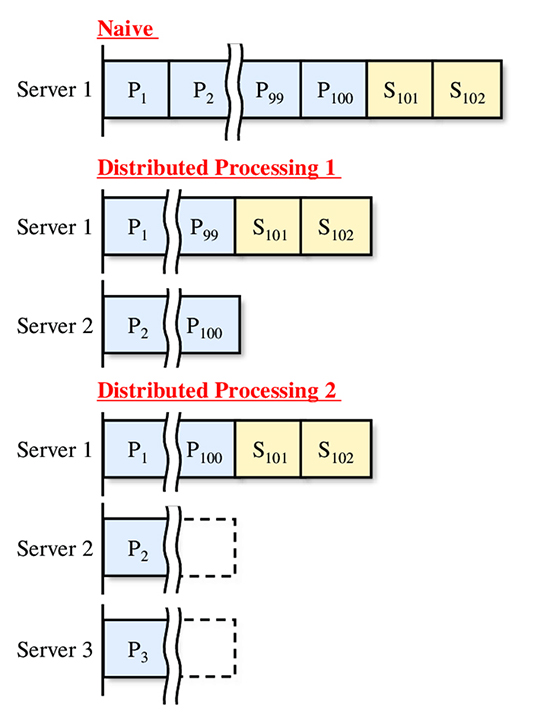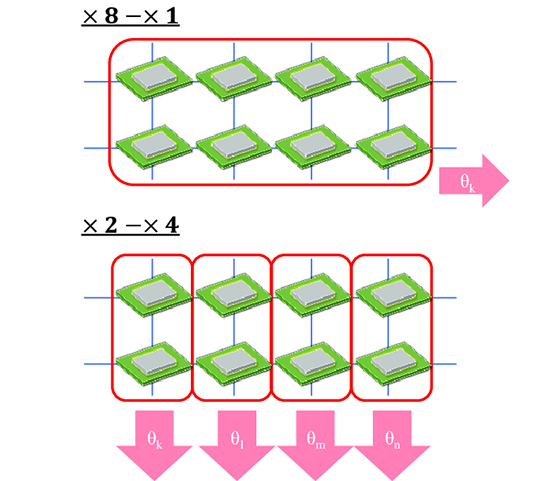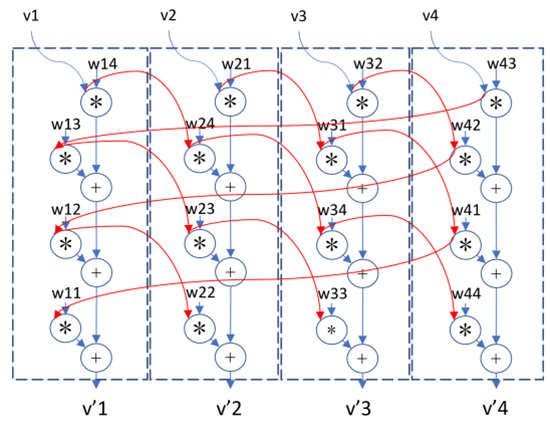Accelerating Innovation Through Collaboration Fujitsu’s Quantum Simulator Challenge 2024

Technology News | 2025-03-28
Introduction
Quantum computing represents a revolutionary leap beyond classical computing. Traditional computers process data as bits that are either 0 or 1—much like an on-off switch. In contrast, quantum computers use quantum bits, or qubits, which can exist in multiple states at once through a phenomenon called superposition.
This capability grants quantum systems extraordinary computational power, enabling them to solve complex problems that are beyond the reach of even the most advanced classical computers. This transformative potential spans industries such as materials science, pharmaceuticals, and finance.
However, significant technical challenges remain before quantum computers can realize this potential on a broad scale. These include maintaining qubit stability, reducing error rates, and developing scalable quantum architectures.
In the meantime, Fujitsu Quantum Simulators are helping bridge the gap. By leveraging quantum principles on classical hardware, they allow organizations to tap into the advantages of quantum technology across diverse fields, paving the way for future quantum breakthroughs.
Quantum Simulation
Fujitsu is one of the leaders both in developing tomorrows Quantum Computers and in developing todays Quantum simulators. Most recently Fujitsu launched a 40-qubit, CPU-based state vector quantum simulator. Built on a foundation of 1,024 FX700 nodes powered by A64FX processors, this system represents a leap in computational efficiency and scalability.
At the core of this innovation is Qulacs, one of the world’s fastest quantum simulation platforms, originally developed by Osaka University and QunaSys Corporation. Fujitsu has enhanced Qulacs to enable parallel execution and distributed processing across its cluster system. By leveraging Message Passing Interface (MPI) technology and optimizing memory bandwidth with Scalable Vector Extension (SVE) operations, Fujitsu has significantly improved performance and scalability.
Recognizing the importance of a robust development ecosystem, Fujitsu has also introduced a software development kit (SDK) with partial compatibility with Qiskit, a widely used quantum computing framework. This move lowered the barriers for developers, enabling them to seamlessly build and test quantum applications within a familiar environment.
Fujitsu's latest version of the quantum simulator features two new key technological advancements: VQE acceleration and QDD technology.
VQE acceleration technology
This innovative technology speeds up quantum-classical hybrid algorithms running on a quantum simulator by up to a factor of 200. This dramatically reduces processing time, unlocking new potential for large-scale simulations in a range of quantum chemistry and materials science.
The key to this innovation is the simultaneous processing of numerous quantum circuit computations across multiple groups. Traditionally, the computational amount of quantum-classical hybrid algorithm simulation increases exponentially with problem complexity, creating bottlenecks in solving large-scale challenges. Fujitsu’s approach can potentially help reduce the computational time linearly along with the number of computational nodes.,. This technology combines node-parallel computing technology using Message Passing Interface (MPI) and distributed processing technology, as well as technology that reduces Hamiltonian terms while suppressing accuracy degradation. It achieves 32QubitVQE calculations 200 times faster than conventional methods.


Each configuration is assigned an individual parameter adjustment. The blue line indicates that the node is connected by InfiniBand. They were actually connected through switches, not directly.
By integrating this technology into its hybrid quantum computing platform, Fujitsu aims to drive innovation in sectors that rely on high-performance computing. The implications are profound: faster simulations of molecular interactions could expedite drug discovery, and the technology's application could be expanded to other fields with further development. For example, enhanced financial models could refine risk assessments and investment strategies.
You can find out more about our joint finding in our Press release [1] or in our paper “Simulator Demonstration of Large Scale Variational Quantum Algorithm on HPC Cluster” [2].
QDD (Quantum Decision Diagram) Technology
QDD implements large-scale, high-speed quantum simulations using graph structures. QDD has the advantage of running FTQC algorithms and can run Shor and Grover algorithms on a scale that causes memory failures in explicit state vector-based simulators. (References: S. Li et al., "Parallelizing Quantum Simulation with Decision Diagrams,".
As many of you know Quantum simulations are modeled using vectors and matrices in a Hilbert space, which grows exponentially with the number of qubits. Traditional simulation methods using statevectors are memory intensive. Decision diagrams, such as Binary Decision Diagrams (BDDs) and their variants like QMDDs, provide a more efficient representation by exploiting redundancy.
Fujitsu Research has discovered that ring communication is effective for decision diagram-based simulator in a multi-node HPC environment. The proposed strategies significantly enhance simulation speed, making them a viable alternative to statevector-based methods.

With these developments, Fujitsu has positioning itself as a leader in the race to make quantum computing more accessible, scalable, and practical for the next generation of innovation.
You can find out more about our joint finding with the university of Tokyo in our paper “Accelerating Decision Diagram-based Multi-node Quantum Simulation with Ring Communication and Automatic SWAP Insertion” [3] .
Quantum Simulator Challenge 2024
Following the very success first Fujitsu Quantum Simulator Challenge in 2023. Fujitsu announced in May 2024 the second Fujitsu Quantum Simulator Challenge with the aim of advancing innovation in the quantum field and testing the latest version of our Quantum simulator incorporating our latest VQE acceleration technology and Quantum Decision Diagram (QDD) Technology.
Again, this year Fujitsu (no verb.) a substantial prize pool to wining participants totaling $100,000 including $50,000 for the overall winner, $30,000 for the runner-up, and $20,000 for third place the initiative aimed to drive meaningful innovation in quantum simulation technology.
The challenge was designed with clear objectives to ensure tangible outcomes for both participants and the broader quantum ecosystem:
- Addressing Real-World Challenges: Teams were tasked with applying quantum simulation to pressing business and industry pain points.
- Testing Next-Generation Technologies: The challenge provided a testing ground for the latest version of Fujitsu’s quantum simulator, allowing participants to test its capabilities in real-world applications.
- Encouraging Collaborative Exploration: The challenge fostered a co-innovation model, where participants and Fujitsu experts worked together to explore novel quantum computing use cases.
- Gathering Critical Performance Insights: Feedback from participants played a vital role in assessing and enhancing the simulator’s performance and scalability.
Beyond financial incentives, Fujitsu also provided participants with a range of resources and support to assist them in the simulator challenge such as:
- Access to Cutting-Edge Technology: Contestants received free access to Fujitsu’s state-of-the-art quantum simulation tools, enabling them to develop and refine their projects on industry leading platforms.
- Expert Collaboration: Teams worked alongside Fujitsu’s quantum specialists, benefiting from in-depth training, technical support, and strategic insights.
- Future Growth Opportunities: High potential projects were considered for future partnerships with Fujitsu, including potential co-branding, investment opportunities, and access to Fujitsu’s extensive partner network of venture capitalists and enterprise customers.
- Exclusive Industry Exposure: Participants had the opportunity to showcase their work at the Fujitsu Quantum Day event, a premier industry event designed to highlight transformative technological advancements.
Participants
This year again the Fujitsu Quantum Simulator Challenge attracted a wide range of leading organizations and top research institutions from around the world to explore the transformative potential of quantum simulation and to apply innovative quantum technologies to some of the most pressing global challenges with projects including:
- Digital Quantum simulation of Nuclear Magnetic Resonance Spectroscopy
- Preparedness of Quantum Secured Network – LAN & Cellular (5G)
- Quantum Image Enhancer (QIE): A Quantum Computing Approach to Satellite Image Processing
- Industrial Shift Scheduling on the Fujitsu Quantum Simulator
- The Quantum Airfoil: Simulating a Useful Industrial Application Using the Quantum Lattice Boltzmann Method
- Large-scale simulation of quantum phase estimation algorithms
- QuPIV - Quantum cross-correlation for Particle Image Velocimetry
- Develop approximation of excitation circuits corresponding to partial Hamiltonian of molecular segments in the finite number of qubits
- Exploring Practical Advantage for Quantum Simulation-Based Optimization
- Simulating liquid-NMR experiments
- Variational Quantum Eigensolver (VQE) for Ground State Energy Estimation of Benzene
- Fine-tuning classical large language models with quantum machine learning on a large-scale quantum simulator
- A Metropolis-inspired ansatz for solving Ising Hamiltonians with VQE
- Simulating SIC-POVM Qutrit Measurements using Qubit Systems
- Quantum-Assisted Physics Informed Neural Network(QA-PINN)
- Quantum Evolutionary Optimization Solver for 0/1 Knapsack Problem
- Scaling Variational Quantum Linear Solver for large-scale Computational Fluid Dynamics applications
- Clustering by SVM using Fujitsu Quantum Circuit Simulator
- General-Purpose Quantum Optimization Solver Using Grover's Algorithm
The winning participants
Building on the success of last year Fujitsu Quantum Simulator Challenge this year’s competition again attracted a wide range of entrants from both indicatory, academia keen to test the capabilities of the latest Fujitsu Quantum Simulator technology.
The quality of entrant’s submissions was extremely high, but after careful deliberation, the judges found submission from the Delft University of Technology team in the Netherlands to be the overall winners of the second Quantum Simulator Challenge in a close competition. With their innovative quantum algorithm for Industrial Shift Scheduling.
In second place came Technische Universität Ilmenau from Germany with their innovative quantum algorithm to accelerate Particle Image Velocimetry (PIV) and in third place came a team form QunaSys Inc in Japan with their large-scale simulation of quantum phase estimation algorithms.
We would again like to extend our heartfelt thanks to all participants for their remarkable contributions and active participation in the Quantum Simulator challenge and contribution to improving Quantum simulations . We eagerly anticipate future collaborations and continued engagement with you all.
Participants research overviews
Delft University of Technology (Netherlands)
Industrial Shift Scheduling on the Fujitsu Quantum Simulator
Shift scheduling is relevant in almost all economic and social sectors.
Essential in manufacturing facilities, like a car manufacturer.
- More optimal shift scheduling can reduce labor costs by 21%
- It is a large and complex problem, esp. for global production networks.
- Scheduling is done using approximate optimization algorithms.
- Exact solution is used to benchmark approximate algorithm.
This paper presents QISS (Quantum Industrial Shift Scheduling) [4] [5], the first exact quantum algorithm for industrial shift scheduling, developed in collaboration with a car manufacturer. Unlike traditional shift scheduling which focuses on adequate shift coverage, QISS aims to maximize productivity while minimizing labor costs in automotive manufacturing, considering target production volumes and intermediate storage constraints. The algorithm uses Grover's adaptive search to find solutions meeting all constraints. Simulated on the Fujitsu quantum simulator for up to three days of scheduling (using 39 qubits for two days and 35 for three), QISS demonstrates the feasibility of applying quantum computing to complex real-world industrial optimization problems. The authors provide open-source code and feedback for improving the Fujitsu simulator, highlighting the potential of QISS as a benchmark for both classical and quantum approaches. The paper emphasizes the unique challenges of industrial shift scheduling compared to other sectors, focusing on the need to meet precise production targets and manage limited storage capacity. While classical methods often rely on heuristics, QISS offers an exact solution for smaller problem instances, potentially improving the benchmarking of classical heuristic algorithms.
- [4] Anna M. Krol, Marvin Erdmann, Rajesh Mishra, Phattharaporn Singkanipa, Ewan Munro, Marcin Ziolkowski, Andre Luckow, and Zaid Al-Ars. QISS: Quantum Industrial Shift Scheduling Algorithm. Submitted to IEEE Transactions on Quantum Engineering. 2024. arXiv: 2401.07763 [quant-ph]
- [5] Anna M. Krol, Marvin Erdmann, Ewan Munro, Andre Luckow, and Zaid Al-Ars. “Assessing the Requirements for Industry Relevant Quantum Computation”. In: Proceedings of the 2024 IEEE International Conference on Quantum Computing and Engineering (QCE). Montreal, Canada, 2024. arXiv: 2408.02587 [quant-ph]
Technische Universität Ilmenau (Germany)
QuPIV - Quantum cross-correlation for Particle Image Velocimetry
This paper proposes a quantum algorithm to accelerate Particle Image Velocimetry (PIV), a technique used to measure fluid flow velocities. PIV currently relies on computationally expensive cross-correlation calculations. The paper detailed improvements to quantum amplitude amplification and efficient state preparation for sparse images. The algorithm's applicability is demonstrated through its use in PIV, highlighting its potential impact on various fields including wind tunnel testing and turbine design. The broader business applicability stems from the fact that cross-correlation is a fundamental operation in many signal processing applications, from AI and image processing to telecommunications.
QunaSys Inc, (Japan)
Large-scale simulation of quantum phase estimation algorithms
QunaSys performed large-scale simulations of quantum phase estimation (QPE) algorithms, a key method for quantum chemistry calculations. They simulated both qubitization and Trotter QPE methods. The qubitization method, while requiring fewer gates, demands many ancilla qubits; their simulation on the H2 molecule used up to 39 qubits, a significant achievement. The Trotter method simulation, applied to a truncated 32-qubit Hamiltonian of C2H6, reached up to 38 qubits, exceeding the capabilities of classical Full-CI calculations on standard laptops. These simulations represent, the largest-scale simulations of their kind, for each QPE method, demonstrating progress towards practical quantum chemistry applications.
It is Time to Leverage Quantum Technology
Quantum research is advancing at an unprecedented pace, and with it, the capabilities of quantum simulations to solve real-world challenges are rapidly expanding. For organizations looking to gain a competitive edge, the moment to explore quantum technology is now. Fujitsu stands at the forefront of this revolution, offering advanced quantum simulations that can drive transformative benefits for your business today.
Why Now?
Quantum simulations are no longer just theoretical. They are delivering practical solutions that enhance decision-making, accelerate discovery, and optimize complex systems. The organizations poised to benefit the most from early adoption:
-
1. Pharmaceuticals and Biotechnology
Revolutionizing drug discovery and personalized medicine.
-
2. Finance and Investment
Enhancing risk analysis, portfolio optimization, and fraud detection.
-
3. Cryptography and Cybersecurity
Developing next-generation encryption methods.
-
4. Materials Science and Chemistry
Enabling the design of innovative materials at the molecular level.
-
5. Supply Chain and Logistics
Optimizing routes, inventory, and resource management.
-
6. Modeling and Simulation
Improving accuracy and speed for complex scenarios.
-
7. Aerospace and Defense
Advancing simulations, materials design, and strategic planning.
-
8. Telecommunications
Enhancing network optimization and security.
-
9. Transportation
Innovating traffic management and autonomous vehicle systems.
-
10. Artificial Intelligence and Machine Learning
Accelerating model training and complex problem-solving.
These sectors are also the most vulnerable to disruption if they wait for fully functional quantum computers before exploring quantum-based solutions. Early adopters will lead their industries, while those who delay risk falling behind.
How Quantum Technology Transforms Organizations
Quantum computers will not replace classical systems; rather, they will complement them by tackling complex problems that are beyond the reach of traditional computing. Harnessing the power of quantum technology has the potential to unlock value in five key areas:
1.Advanced data analysis
Quantum computing enables faster and more sophisticated data analysis, allowing organizations to process massive datasets in real-time. This leads to sharper insights and more agile decision-making. For example, quantum algorithms can uncover hidden patterns in customer behavior, driving more effective product development and marketing strategies.
2. Quantum enhanced discovery
By drastically accelerating discovery processes, quantum computers reduce costs and open new possibilities in scientific research. This is particularly transformative in drug discovery, where analyzing complex molecular interactions becomes faster and more accurate, expediting the journey from lab to market.
3. Quantum enhanced forecasting and simulations
Quantum computing’s unparalleled processing power improves the accuracy of complex forecasting and simulations. Whether it is climate modeling, financial market predictions, or supply chain management, quantum systems analyze vast datasets from multiple sources to deliver deeper insights and more precise predictions.
4. Quantum optimization
Quantum technology enhances operational efficiency by optimizing complex systems and processes. This includes product design, resource utilization, and logistics, helping businesses to reduce costs, minimize waste, and drive sustainability.
5. Quantum encryption
Quantum mechanics introduces new encryption methods leveraging principles like entanglement and superposition, creating virtually unbreakable security systems. This revolutionary approach to cybersecurity safeguards sensitive information and critical infrastructure against emerging threats.
Conclusion : The Future is Quantum, and the Time is Now
Quantum technology is reshaping industries and creating unprecedented opportunities for innovation and growth. Organizations can already access many of these advantages today using Fujitsu’s advanced quantum simulator.
The pace of development is accelerating. For forward-thinking leaders who want to gain a competitive advantage from early quantum adoption, the time to act is now. Connect with Fujitsu to discover how our quantum simulations can solve your challenges today and how our quantum computers will transform your business tomorrow.
Why not talk to Fujitsu now to see how we can help your organization?
Find out more.
Nick Cowell
Principal Consultant & Fujitsu Distinguished Engineer, Technology Strategy Unit, Fujitsu
Nick is a technologist and futurist with extensive experience in hardware, software, and service development, having previously worked for leading technology providers across the USA, Europe, and Oceania.

